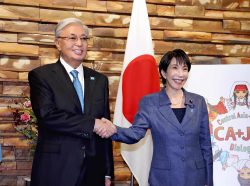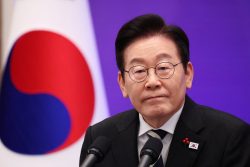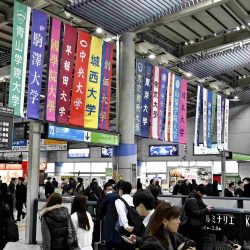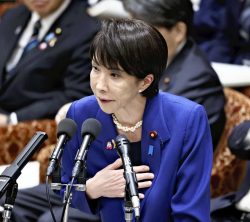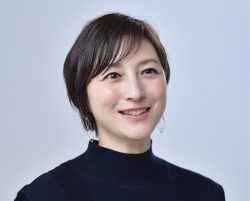Japanese Cosmetics Firms Competing with South Korean Brands over Inexpensive Products; South Korean Brands Dominating Market Through Social Media
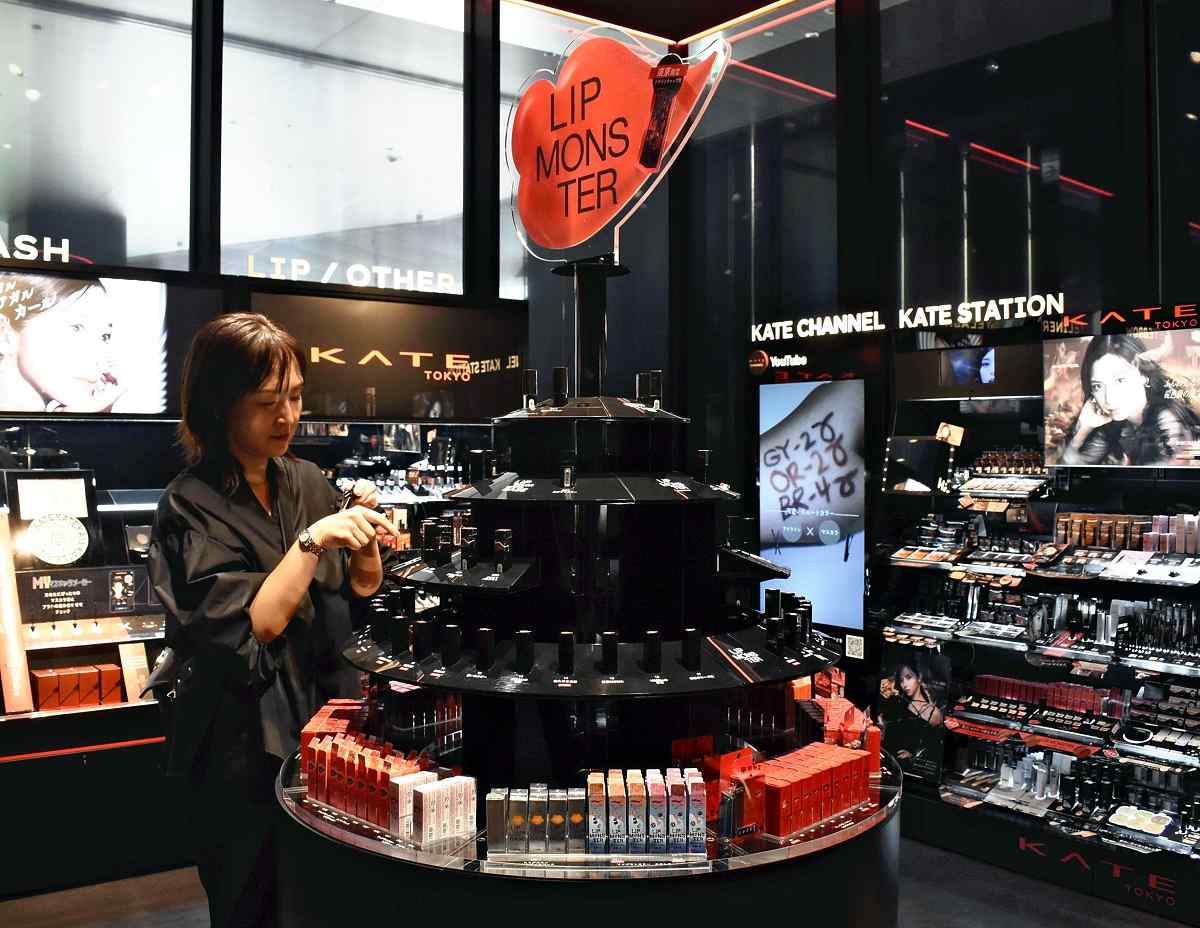
A beauty advisor is ready to assist customers at the Kate flagship store in Shibuya Ward, Tokyo, on Sept. 9.
1:00 JST, October 8, 2024
Competition among South Korean and Japanese cosmetic manufacturers is intensifying over so-called “petit price” cosmetics that are inexpensive and high-quality. With South Korean companies increasing their presence in the Japanese market through social media, and petit price products attracting more attention than before, Japanese firms are trying to regain lost ground.
In July, Kao Corp. opened the flagship store for its makeup brand Kate, which has a young target demographic, at the new commercial complex Shibuya Sakura Stage in Shibuya Ward, Tokyo.
Beauty advisors at the flagship store serve customers and an artificial intelligence diagnosis service that recommends products suited to each customer is also popular.
“It’s uncommon to be able to receive a makeup consultation for petit price products,” said a 20-year-old vocational school student said. “It’s fun,” she added.
Kate has drawn attention for its long-lasting “Lip Monster” lipstick series, and its core products are under ¥2,000 and sold mainly at drugstores.
“It is of major significance that we have a base in Shibuya, where many young people gather, to increase brand popularity,” a Kao official in charge of the store said.
South Korean cosmetics, mainly from inexpensive brands, have become more popular in the Japanese cosmetics market. France had been the top exporter of cosmetics to Japan for many years, but was overtaken by South Korea in 2022, according to the Cosmetic Importers Association of Japan. According to research company Intage Inc., one in three people in their 10s and 20s have bought from at least one South Korean cosmetics brand.
Many inexpensive South Korean cosmetics brands come and go quickly, finding it difficult to establish their positions in Japan. What these brands have in common is the effort they put into advertising on social media with K-pop idols who are popular in Japan.
Cushion foundations, which are marketed as being quick to apply and long-lasting, first became popular with South Korean products and Japanese manufacturers are trying to catch up with them.
According to a senior official at a leading Japanese cosmetics manufacturer, the popularity of these cosmetics was created by South Korean social media, where word of mouth from consumers spread about the products’ low price and good quality.
Reviewing strategies
The size of the domestic market for inexpensive cosmetics in 2023 increased by 7.7% year on year to ¥709.9 billion, according to Fuji Keizai Group Co. This accounts for nearly one-fourth of total cosmetics sales in Japan. The market is expected to further grow in the future. While Japanese manufacturers have focused on high-end cosmetics with a high profit margin, mainly targeting foreign tourists in Japan, they are now being forced to review their strategies.
Kose Corp.’s Visee brand released a short commercial on social media featuring a male actor popular among young people, with the aim of having it go viral.
Tokiwa Pharmaceutical Co.’s cosmetics brand Excel launched a member-exclusive website that lets users interact and ask about things such as makeup assistance. The company aims to increase the number of fans of its products through the website.
“Companies now need to not only enhance the functions and quality of their products, but also be creative in conveying that to consumers,” said Keiko Yashio, professor of marketing at Toyo Gakuen University.
"Business" POPULAR ARTICLE
-

Tokyo Economic Security Forum to Hold Inaugural Meeting Amid Tense Global Environment
-

Keidanren Chairman Yoshinobu Tsutsui Visits Kashiwazaki-Kariwa Nuclear Power Plant; Inspects New Emergency Safety System
-

Imports of Rare Earths from China Facing Delays, May Be Caused by Deterioration of Japan-China Relations
-

University of Tokyo Professor Discusses Japanese Economic Security in Interview Ahead of Forum
-

Japan Pulls out of Vietnam Nuclear Project, Complicating Hanoi’s Power Plans
JN ACCESS RANKING
-

Tokyo Economic Security Forum to Hold Inaugural Meeting Amid Tense Global Environment
-

Keidanren Chairman Yoshinobu Tsutsui Visits Kashiwazaki-Kariwa Nuclear Power Plant; Inspects New Emergency Safety System
-

Imports of Rare Earths from China Facing Delays, May Be Caused by Deterioration of Japan-China Relations
-

University of Tokyo Professor Discusses Japanese Economic Security in Interview Ahead of Forum
-

Japan Pulls out of Vietnam Nuclear Project, Complicating Hanoi’s Power Plans




